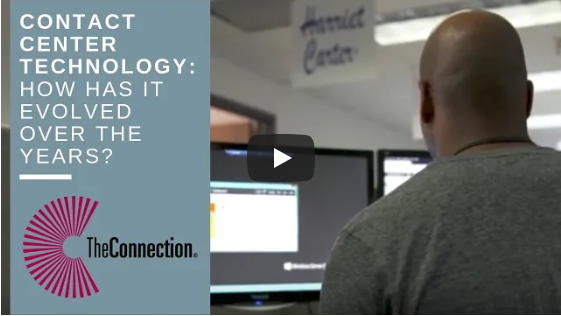How Have Contact Centers Evolved Over the Years? [VIDEO]
Customers are changing the way they interact with businesses. Gone are the days where someone’s first reaction is to pick up the telephone and call a prospective business. Often times, people start by doing a little research online, messaging with an online chatbot, and finally, reaching out via telephone. With all those steps, it is important that your business is on top of every user touchpoint!
Our CTO, Ken Unruh, breaks down how call centers have adapted to this changing technology:
Mobile Devices Encourage E-Chatting
From emailing to chatbots, mobile phones and websites drive the need to be present online. So, what types of technology does mobile usage encourage, and how are contact centers adjusting?
Chatbots Produce Strong Leads
Chatbots are an online messaging tool that allow your website visitors to quickly reach a representative. Have you ever been browsing a website and suddenly see a little window that pops up in the corner of the page with a “Have a question?” message (or something similar)? Those messages are usually initiated by chatbots.
Typically, chatbots collect the name, email address, and basic question from the visitor before automatically passing them on to a real person. Basically, they sort out the information and needs of the visitor and neatly package all that info for the representative who will handle the interaction from there. Sometimes, depending on the complexity of the chatbot, they can even send contacts to the appropriate representative based on the visitor’s needs. Talk about advanced!
Contact centers that keep up with technology have learned to adapt by building workflows that send website users to appropriate representatives. These centers should have teams of representatives ready to answer online questions.
Email Is Still Important
Of course, email is no new technology! But, all-encompassing contact centers should have a solid grip on email responses, as well. For instance, have you ever seen emails for businesses that look like “info@company.com”? These emails (and others like them) could be sent to contact center representatives, who should be eager to respond within 24 hours of receiving the message.
Text/SMS Provides New Opportunities
While relatively new to the contact center scene, SMS (Short Message Service) has become a popular way to contact businesses as well. Most cases of SMS messaging are from the business to the customer that has opted-in to receive text notifications. Think of a busy restaurant. Often, they send a text to a customer when their table is ready rather than provide them with those vibrating notification tools.
One of our favorite examples of texting in the business world is Domino’s Pizza. With Domino’s AnyWare program, you can text an emoji of a pizza to Domino’s, and they’ll deliver your favorite pizza in no time! But they didn’t stop there. You can now order a Domino’s pizza using Amazon Alexa, Google Home, and even Slack!
Contact centers should not only be aware of the power of text, but they should be actively involved in updating their technological capabilities to stay ahead of the competition.
Your Contact Center Should Stay Ahead
“Contact Centers need to evolve quickly in order to provide the sophisticated customer experience the customers and executives expect, and also provide all the different contact channels and flexibility,” Ken says.
Easier said than done! But, that is the job of contact centers nationwide. And with the quickly evolving technology comes the need to continually delight customers on all channels. Is your company currently using these different channels? If the answer is no, you should consider outsourcing your contact center team to someone who has the technology and resources available to grow your business.



